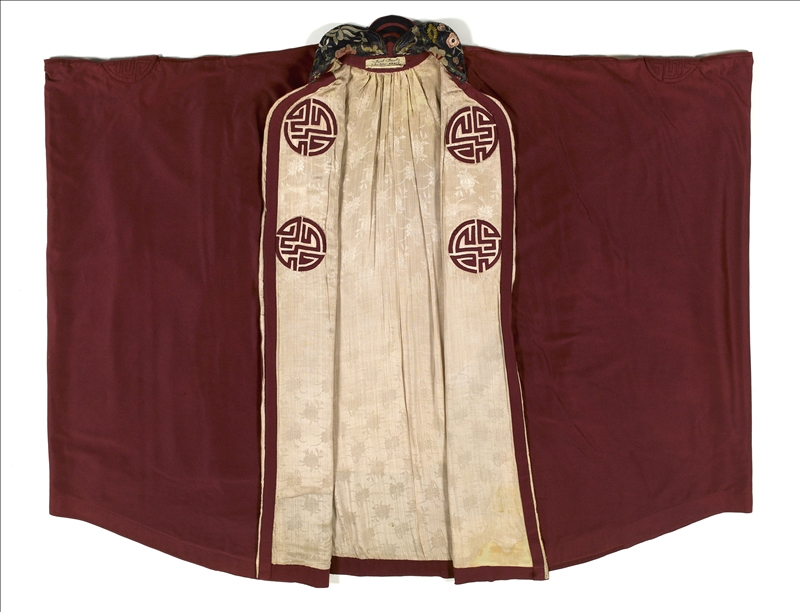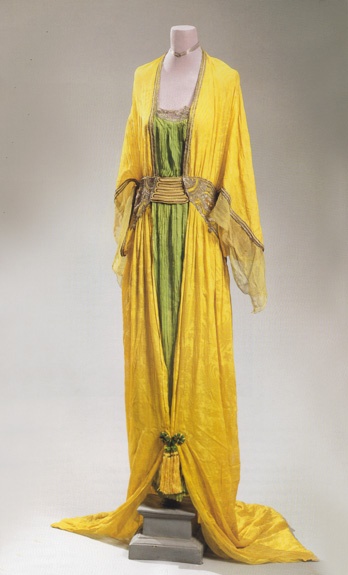It appears this last gasp of summer is all about the early 20th century--I was at a 20s event a couple of weeks ago, and now I'm gearing up for a fabulous
suffrage rally and "Chelmsford Abbey" ball. After not having any time to sew all summer, planning for these events has ended up all centered around one particular designer from the 1910s and 20s: Paul Poiret. He was such an iconic designer that he was often referred to as the "king of fashion," and while I can't say I'd ever been particularly drawn to him before, all of a sudden I'm on the Poiret train!
 |
| whoops, sorry--not PoirOT! PoirET! |
 |
| yep, that's the one.... |
Poiret was an incredibly influential designer with a flair for the dramatic, which appeared not only in his couture designs but in his relationship with theater as runway (similar to the modern red carpet at awards shows). Poiret began his career shopping designs to fashion houses around Paris before moving to work as staff for particular design houses. One of those was Worth, where Poiret was hired in 1901 to produce the less showy pieces for Worth clients--the "
fried potatoes" of a Worth wardrobe. At this time Poiret was beginning to experiment with shapes from other areas of the world, and designed a coat based on Japanese kimonos, which are cut along straight lines and lie flat. The story goes Poiret decided to leave Worth after one such coat for Princess Bariatinsky of Russia was rejected. Upon seeing the coat, the princess declared that it looked like the sacks in which heads are placed after beheadings--not a compliment! So Poiret left to set up his own couture house, where he could experiment with styles from a variety of origins for his muse--his wife Denise, whose slender build was ideal for Poiret's draped creations.
 |
| a Poiret "confucius" coat |
The Poiret house, started in Paris in 1903, went on to heavily influence popular fashions of the 1910s and 1920s. Poiret pioneered draping as a technique for design and construction, and heavily used rectangles as the base shapes for his designs--a huge departure from the accentuated curves and detailed fit of the 1900s. Along with other lead designers of the time (include
Madeleine Vionnet, who invented bias cut dresses and protected the idea with a copyright), Poiret's flowy dresses moved away from the fitted gowns of decades past, and therefore were not tied closely to undergarments (thereby not requiring a corset). This was a monumental change, and these high fashion ensembles are a dramatic departure from previous silhouettes.
Poiret was particularly interested in drawing from the aesthetics of non-western cultures, primarily French colonies and/or countries beginning to trade with France, including North Africa, Japan, and the Middle East, as well as antiquity, such as the draped chitons of ancient Greece. The influence of these regions on Poiret's designs can be seen everywhere from wide headbands and turbans to wide "kimono" sleeves and the use of brocades.
 |
| dress and embroidered vest by Poiret (via) |
 |
| brocade gown with wide sleeves by Poiret, 1922 (the Met) |
While Poiret is famous for his Asian and Middle Eastern inspired designs, aesthetics from these regions became incredible popular during the 1910s in fashion and the arts. In June 1910 the Ballet Russes premiered Scheherazade, based on "1001 Nights," which was a smashing success. Inspired by a collection of Persian minitures, the costumes designed by Leon Bakst fueled the fire of Poiret's high fashion designs.
 |
| Vera Fokina and Mikhail Fokine in Scheherazade, 1910 |
With the success of Scheherazade, Poiret launched his Orientalist designs in full--including the "jupe-pantalon" (skirt-trouser) for women, which was considered incredibly scandalous both for introducing pants into couture womenswear and the sexualized references Poiret made with the styles, which he called "harem" pants/skirts (both seem to be used interchangeably?). While I'm fairly uncomfortable with the term "harem pants" for its racist undertones (or not-so-undertones), the introduction of female fashions with two legs (no matter how baggy and skirt-like) is important because it aligns with several other movements towards more equality for women: the decline of the corset, the women's suffrage movement, and women's involvement in WWI. For this reason, I'm feeling particularly drawn to jupe-pantalon styles at the moment. It was exactly what the anti-suffrage movement was afraid of--women wearing pants! (and yet, the earth didn't explode...funny, that.)
 |
| c.20s, with a very "deco" pattern |
 |
| Belgian postcard, 1913 |
 |
| evening ensemble, 1914 |
Also, Sybil shows up to dinner in a "jupe culotte" ensemble in season 1 of Downton Abbey. Who doesn't want to dress like Sybil?
 |
| scandal! |












Haha, but what if we dressed like Poirot? That could be amusing! I hope you come up with fabulous things to wear!
ReplyDeleteBest,
Quinn
haha we should definitely dress like Poirot! but only if we also get to solve some mysteries :)
DeleteThanks!